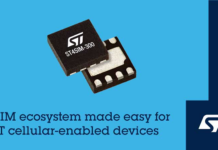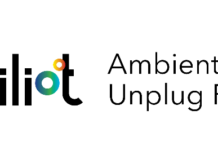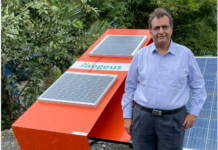
The Internet of Things (IoT) has the potential to dramatically reduce the impact of mining operations on the environment, according to new research from Inmarsat, which found that environmental monitoring is the number one driver of IoT in the sector. The research from the global mobile satellite company suggests that IoT will enable mining businesses to monitor their assets more accurately and react more quickly to any potential issues, minimising environmental damage.
In May 2017 market research specialist Vanson Bourne interviewed respondents from 100 large mining companies across the globe for Inmarsat’s ‘The Future of IoT in Enterprise – 2017’ report and found that 47 percent of organisations identified monitoring environmental changes as their number one priority for their IoT deployments. In addition, 57% of respondents from the mining sector reported that the most exciting innovation that IoT will bring to the world is improved environmental monitoring.
Joe Carr, Director of Mining at Inmarsat Enterprise commented: “Improving environmental monitoring is an area where mining operators clearly see real value in IoT. The increasing pressure from strict government regulations focused on mining’s environmental impact is placing a heavy burden on businesses in the sector, so operators must embrace innovative technologies if they are to comply and continue to operate efficiently and sustainably.”
Mining businesses have a duty of care over the lifetime of a mine to ensure that they minimise their impact on the environment and rehabilitate the land to its natural state. When this is done by manually-operated processes, it can be expensive and prone to error, with sub-optimal data collection and analysis.
Inmarsat is currently working with several mining operators to achieve their corporate social responsibility (CSR) objectives and comply with government regulations by deploying innovative monitoring solutions made up of connected networks of sensors and devices.
These digital networks are able to deliver accurate, real-time insight and intelligence on a wide variety of data points to a cloud-based platform for analysis. For example, a network of sensors across a tailings dam can constantly gather data on the levels and integrity of the dam, avoiding the expense of sending a staff member out to gather a single data point and removing the possibility of human error, while enabling staff to react instantly if readings breach minimum or maximum safety levels.
Carr concluded: “Connectivity is critical for successful IoT deployments. The remote location of many mines means that terrestrial or cellular networks are often not available. Satellite communications not only offer better coverage and more reliable communication networks, crucial in the event of extreme weather or an emergency but can provide connectivity in deep, open pit mines and even underground, using repeaters. With up to 99.9% uptime, Inmarsat’s L-band services are enabling IoT solutions in mines globally, even in the most remote and hostile environments.”
To view the research microsite and download the full report, ‘The Future of IoT in Enterprise – 2017’ visit: http://research.inmarsat.com/


















